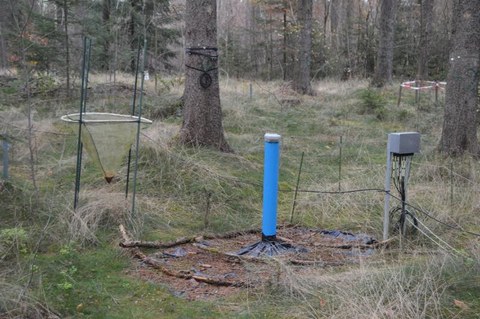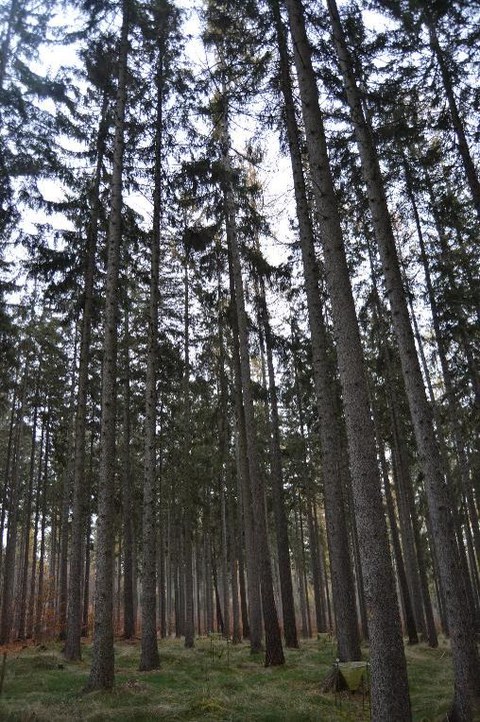Jan 10, 2023
Forests in the age of climate change
Collaborative project led by TU Dresden, the University of Göttingen and the Bavarian State Institute of Forestry seeks to develop a monitoring system to gauge groundwater recharge and evaporation in forests
Climate change presents numerous challenges for water resource management and forestry. One of these is the availability of water. Forests use, store, and release water back into the environment in high quality. However, the amount of water that evaporates in our forests and what proportion of precipitation results in groundwater recharge can only be estimated based on models at forest observatories as part of environmental forest monitoring. A collaborative research team with members from Technische Universität Dresden, the University of Göttingen and the Bavarian State Institute of Forestry now seeks to develop effective and efficient routines for monitoring rates of transpiration among forest trees. The Federal Ministry of Food and Agriculture as well as the Federal Ministry for the Environment, Nature Conservation, Nuclear Safety and Consumer Protection are providing financing from the Forest Climate Fund for three years, totaling about EUR 925,000.
Over the last few years, the group led by Prof. Andreas Hartmann (TU Dresden) has developed novel methods for estimating groundwater recharge using soil moisture monitoring networks. Researchers from the collaborative project now want to couple these methods with a novel process for recording the water balance in trees in order to develop a strategy with real-world application that will integrate the new monitoring network into the existing network of intensive forest monitoring locations throughout Germany. Many measurements from various locations will be used to develop the new monitoring network as well as to detect and, if possible, reduce previous uncertainties in the model-based estimation of forest water economy.
“In addition to better capturing the evaporation and groundwater recharge rates, we hope to better understand how trees with different root systems compete for water resources,” says Prof. Martin Maier, Head of Department and Professor of Soil Physics at Göttingen University. “We want to make a lasting contribution to a decisively improved data basis for decisions in environmental policy, which, on account of recurring droughts, are urgently necessary,” adds TU Dresden’s Prof. Andreas Hartmann who, like Dr. Stephan Raspe from the Bavarian State Institute of Forestry, is in charge of another subproject as part of this collaboration. The results are expected to aid politicians and economists to develop strategies for drought-resistant silviculture.
Contact:
Prof. Dr. Andreas Hartmann
Institute of Groundwater Management
Faculty of Environmental Sciences
Tel.: +49 351 463-42551
https://tu-dresden.de/bu/umwelt/hydro/igw


